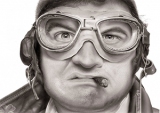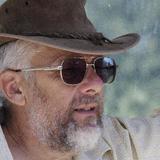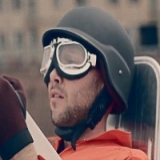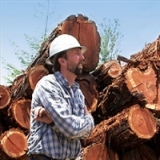- Forum
- General Discussion | Introductions | Off Topic Forum
- Photography General Discussion
- Why does snow photos always look blueish?
Why does snow photos always look blueish?
-
 Topic Author
Topic Author
- NickSano
- Photography Hooked
-
- Nikon D800
- Followers: 130
- Posts: 612
-
Points:
4907
-

- Nikon Shooter
- Oh Wise One
-
- 3S 3X 810 850
- Followers: 197
- Posts: 13795
-
Points:
88932
Post #709784
reflection readout but nothing to do with WB — auto WB is ok.
The light meter is tune to 18% reflected light but the snow is way
more reflective : +/- 80%. So, to have a correct exposure, one u-
ses an EV+ (in your case) to compensate the tricky light condition
for the metre.
In film times, the rule of thumb was EV +1,5 ~+ 2 BUT protect your
whites by making sure you're not going too far — always have a look
at your best friend: the histogram. Have a good time!
Light is free… capturing it is not!
-

- Nikon Shooter
- Oh Wise One
-
- 3S 3X 810 850
- Followers: 197
- Posts: 13795
-
Points:
88932
Post #709785
The snow reflects what it sees. If it sees a blue sky, the blue is lost
in the bright light of the Sun. If it sees a grey sky, it will less of a pro-
blem since there are little chances of bright sunlight but will require
some EV compensation nevertheless.
Light is free… capturing it is not!
-

- Ozzie_Traveller
- Apprentice
-
- Currently using a Panny FZ-300 and FZ-2500 with occasional use of a Panny mirrorless G-series
- Followers: 124
- Posts: 2713
-
Points:
54276
Post #709793
Our mate NS has hit the issue in one .... the camera is affected in the same way that your eyes are affected. Your eyes see the very bright scene and you put on sunnies to protect your eyes - and the camera closes down the exposure to "protect" the scene ~ and in doing so, your image when you finally see it on the computer screen appears dark / grey / bluish etc.
We need to contradict the camera and rebalance the exposure by over-exposing the scene. Sounds odd, but there it is. If you have not set the histogram to 'on', pop into the setup menu and turn it 'on' - then once out in the landscape, have a sqwiz at the histogram regularly to add or subtract exposure as needed.
(ps- it also happens for street scenes at night - the camera tries to lighten the darkness of the scene, thus blowing out the highlights ... so we need to under-expose the street scene at night)
Hope this helps
Phil from the great land Downunder
www.flickr.com/photos/ozzie_traveller/sets/
-

- Pete Franko
- Snapobsessed
-
- Nikon D750 and Sony A7r II
- Followers: 74
- Posts: 281
-
Points:
5112
Post #709806
-

- H Rocky
- Snapobsessed
- Followers: 87
- Posts: 291
-
Points:
3656
-

- Nikon Shooter
- Oh Wise One
-
- 3S 3X 810 850
- Followers: 197
- Posts: 13795
-
Points:
88932
Post #709884
H Rocky wrote: … or move to cloud WB setting in camera
Pete is right. WB being the less critical parameter prior to SR,
leave it on auto and, eventually, use a grey card. I got myself
on that has the same size than a bank card… always with me.
Light is free… capturing it is not!
-

- fmw
- Newbie
- Followers: 12
-
Points:
12122
Post #709939
Pete Franko wrote: If you don't get it right in camera, that is easy fix in post. Just adjust white balance warmer in Light Room.
I have to disagree here. Nikon shooter had the right answer and that is underexposure. Your camera's light meter recommends an exposure setting designed to put things at an average medium gray level. The metering system tries to put the snow at medium gray as well so your camera underexposes the subject. When shooting snow scenes dial in 1 1/2 to 2 stops additional exposure compensation.
White balance will only mess up any parts of the subject that are not snow.. Exposure compensation is the key.
-

- Ozzie_Traveller
- Apprentice
-
- Currently using a Panny FZ-300 and FZ-2500 with occasional use of a Panny mirrorless G-series
- Followers: 124
- Posts: 2713
-
Points:
54276
Post #710094
+1 to fmw above
ps- you can easily experiment with this at home .... lay out a newspaper and photograph an article to read on your screen later.
The result will be an overall grey background with black lettering ~ due to the camera's metering system attempting to 'grey down' the very bright white background. Dial in EV +1 or +1-1/2 stops or even EV +2 stops and see how the newspaper becomes nice 'n bright ............ and that's the same as your snow pic originally
The WB is quite different and is adjusted in-camera for JPG or in-computer if shooting on RAW
Hope this helps
Phil from the great land Downunder
www.flickr.com/photos/ozzie_traveller/sets/
-

- Don Granger
- Photography Hooked
- Followers: 187
- Posts: 720
-
Points:
9889
Post #710205
All fixable with a slide to the right in Lightroom.
- Forum
- General Discussion | Introductions | Off Topic Forum
- Photography General Discussion
- Why does snow photos always look blueish?
Latest Reviews
The Panasonic G9 II is a 25.2-megapixel micro four thirds camera with numerous features that make it punch out of its weight class, like 779 AF points, 5.8K video, and weather sealing.
The Fujifilm XT5 is a 40MP mirrorless camera capable of 6.2K video at 30p. With those specs, it’s an ideal choice for photographers needing a camera to pull double duty for imaging and video.
The Canon EOS R100 is an entry-level mirrorless camera introduced in 2023. But just because it’s an entry-level camera doesn’t mean it’s a bare-bones camera. Find out why in this review!
Nikon’s retro-looking Nikon Zfc is anything but retro. Under its classic body is a host of features and amenities that make it a worthwhile compact mirrorless camera for 2024.
Forum Top Posters
-
1TCav 6 posts
-
2Ruby Grace 4 posts
-
3Scotty 3 posts
-
4Street Shark 3 posts
-
5Chris Briggs 2 posts
-
6Sassy Girl 2 posts
-
7Carter Gledhill 2 posts
-
8amirahusse... 2 posts
-
9James L 2 posts
-
10Esseff 2 posts
Latest Articles
The Panasonic G9 II is a 25.2-megapixel micro four thirds camera with numerous features that make it punch out of its weight class, like 779 AF points, 5.8K video, and weather sealing.
Cinematic photography is an interesting genre that combines photographic and videographic skills along with effective storytelling techniques. The result? Highly impactful images!
Newborn photography requires skill, the right gear, and a lot of patience. This beginner’s guide discusses critical topics that will help you be more prepared for before, during, and after the shoot.
To fill the frame means to expand the footprint of the subject in your shot. Get in close, zoom in, crop the image, or use other techniques to bring the subject to the forefront.
With these simple yet effective beginner photography tips, you can avoid some of the common mistakes beginners make and get improved results with your images.
Urban photography is a genre showcasing features in urban settings. You can photograph people, architecture, mass transit, and many other subjects. Learn how to do so in this guide!
The Nikon D850 might be an older DSLR, but it was ahead of its time when it debuted in 2017. That means it still has plenty of firepower to compete with today’s powerful mirrorless cameras.
The best beginner camera isn’t the same for everyone. That means having choice is of the utmost importance. In this guide, explore five excellent beginner camera options for 2024 and beyond.
















